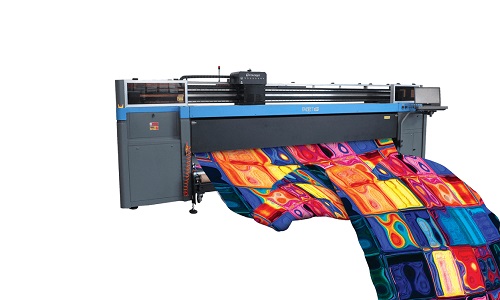As the awareness of sustainability grows among the consumers throughout the world manufacturers sets their eyes on processes and technologies that results in environmental, social & economic benefits. The textile industry being the second pollution creating industry is in urgent need of new technologies which could replace the traditional production processes reducing the carbon footprint eventually. Textile community is embracing new sustainable technology in every field -from the fibre to spin, yarn to weave, the chemicals & ink to print and finish the grey fabric thus bringing life to the fabric in a much eco-friendly way. An excellent illustration of such new technology is digital fabric printer, and this innovates the printing industry. But, Is digital fabric printing really less detrimental to the environment compared to traditional cloth printing? As, the raw material is still the chemicals no matter the procedure is digital or not. In addition to this, the printed fabric in many cases still needs to be washed and steamed. This is the reason the environmental footprint of fabric printing won’t be zero. So what do people do to decrease the environmental footprint of fabric printing?
Assessing the full lifecycle
The effect that a company and its activities have on environment is called ecological or environmental footprint. With Colorjet digital textile printers, the company ensures providing high quality print with lowest possible ecological footprint, ensuring sustainability.
We need to understand the complete printing cycle and assess the same to decrease the environmental footprint of printing. When we assess Life Cycle, we are able to understand, collect and assess the possible effect of a Product or procedure on the environment, calculated in parameter of ecopoints. Exposing the environmental crucial points of your product or printing procedure allows one to check or take them off at a concentrated manner.
Lifecycle for both Rotary screen printing and digital fabric printing can be assessed to compare both procedures, and determine where developments concerning sustainability might be possible. To acquire a whole picture of sustainability of an item, it’s necessary to take in to consideration that the full life cycle, from birth to death. In printing, from raw material to factory gate to the end finished product.
Raw Material is the major reason for ecological footprint and the power that’s consumed for your printing procedure. Packaging and waste water also plays a role in polluting the environment.
By recycling as much potential substance, we comprehend that printing process with very minimal waste. However, what we need to see is that does digital printing have an even far more sustainable cradle-to-gate procedure than inkjet screen printing?
Producing 1 particular display for inkjet rotary printing includes an Ecopoint score of 7, even while producing just one kilogram of ink for digital fabric printing just dozens 0,3 Ecopoints. When exclusively noticing those metrics, it’s apparent for the creation of this consumables useful for fabric printing as compared to printing via traditional screen printing.
The Life Cycle of a product really does not end at the mill gates. The method by which in which the customer takes advantage of the item additionally affects the surroundings. Within this stage of the life cycle, Colorjet will only enable the customer with application service to cut back his ecological sway.
The Entire Life Cycle is tough to analyze. The most important reason behind this could be that the massive assortment of users. Fabrics and layouts may vary widely (this affects the range of displays which are necessary for printing), however there’s also a major diversity from the using a digital printer, for example, hours each shift and also the shifts every day. With inkjet screen printing, this diversity is much larger compared to digital fabric printing, since the variety of colours per design chiefly help determine the variety of screens required in screen printing. In digital fabric printing, design and fabric material would be the only factors that influence this particular diversity.
By assessing the Entire Life Cycle, We can create a precise comparison between digital fabric printing and rotary screen printing once it comes to water consumption and energy intake. Both of these factors mostly determine the ecological footprint of every printing process.
Certainly one of our clients quantified the Water usage per linear meter of printing by producing only rotary for a single week and the a few weeks entirely digital. For rotary screenprinting, they quantified they utilize normally between 51-61 litres of water each linear meter, whereas for digital fabric printing just 15-20 liters of water were used: a saving of nearly 70 percent. If all meters on the planet throughout a year were published from digital textile printers as an alternative of printing, we’d save 760 billion litres of drinking water, which might offer each individual in the world with two liters of fresh fresh water every day for 50 days.
A rotary printer requires around 400.000 kWh of power each year each printer. Whereas, with digital textile printer, we can save around 55-60 percent of this energy. If each one of understand the benefits of digital printing and shift to it, then together we can save around 800 mio m3 of gas and also approximately 1.000 GWh of power
The future of sustainable printing
Sustainability is growing increasingly more importance in the printing market. Keeping the long run in mind, we will need to really make changes with regards to our printing methods, moving towards digital. Printing fabrics with digital technology unquestionably results in a more sustainable planet, though a bit higher cost per linear meter remains a concern.
Comparisons demonstrate that digital fabric printing could be the sustainable option Steaming and washing machine, specifically, are still utilizing a significant amount of energy and water. With digital Inkjet printer a nearly waterless technology not requiring steaming and washing, remains the most suited option, keeping sustainability in mind.


